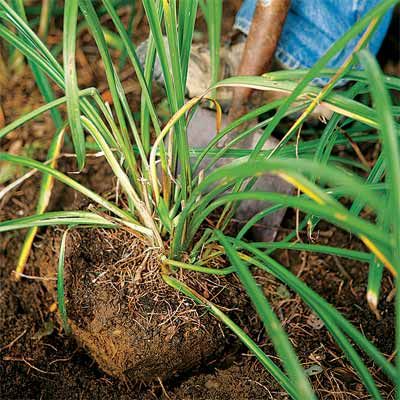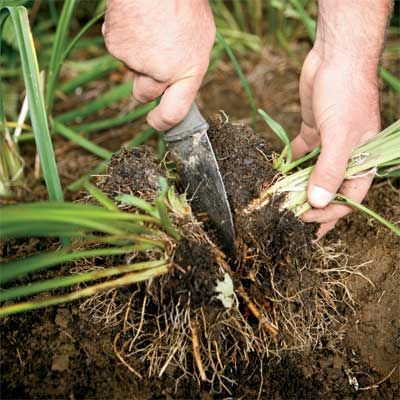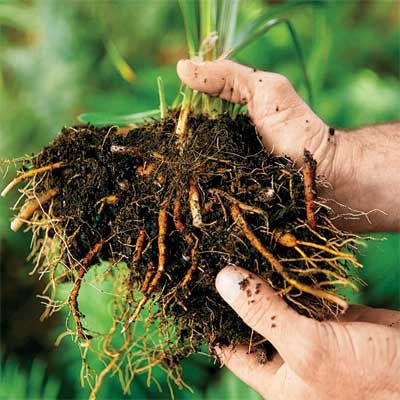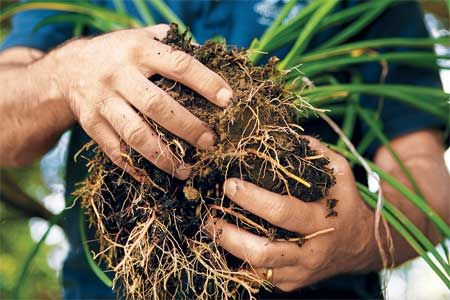We may be compensated if you purchase through links on our website. Our team is committed to delivering honest, objective, and independent reviews on home products and services.
Project details
Skill
Cost
Estimated Time
Dividing perennials is an essential gardening technique that helps maintain the health and vigor of your plants. Whether you’re a seasoned gardener or a beginner, learning how to divide overgrown perennials is a valuable skill that will enhance your garden’s beauty and productivity. In this guide, we’ll walk you through the entire process, from understanding why division is necessary to the aftercare of newly divided plants.
Understanding Perennial Division
Perennial division is a horticultural practice that involves separating an established plant into smaller sections, each with its own roots and shoots. This process not only controls the size of your perennials but also rejuvenates them, promoting better blooming and overall growth. Certain perennials, like the daylilies pictured in this article, grow quickly and specifically benefit from regular division.
Why Divide Perennials?
Dividing perennials offers several benefits for both the plants and your garden:
- Rejuvenation: Stimulates new growth and can revive older, less vigorous plants
- Size control: Prevents perennials from outgrowing their designated spaces
- Propagation: Creates new plants, allowing you to expand your garden or share with friends
- Improved blooming: Divided plants often produce more flowers due to reduced competition for resources
- Health maintenance: Can help prevent disease and pest issues in overcrowded plants
Signs Your Perennials Need Dividing
Recognizing when your perennials require division is key to maintaining a thriving garden. Look for these indicators:
- Reduced flowering or smaller blooms
- Dead or bare spots in the center of the plant
- Overcrowding or plants spilling out of their designated areas
- Stunted growth or lack of vigor
- Plants that require staking due to weak stems
Generally, most perennials benefit from division every three to six years, but some may need it more or less frequently depending on their growth rate and specific needs.
Best Times To Divide Perennials
Timing is important when dividing perennials to ensure successful establishment and minimal stress on the plants. The best time to divide often depends on the plant’s blooming season.
Spring-Blooming Perennials
For perennials that bloom in spring, such as irises and peonies, the ideal time for division is in late summer or early fall. This timing allows the divided plants to establish new roots before winter dormancy, ensuring they’re ready to bloom the following spring.
Summer and Fall-Blooming Perennials
Summer and fall bloomers, like daylilies and asters, are best divided in early spring as new growth emerges. This gives them ample time to develop strong root systems before their blooming season.
“A good rule of thumb is to split apart spring- and summer-blooming perennials in late summer or before the fall frost. Fall bloomers are best divided in the spring so that they can devote their energy to growing roots and leaves,” advises Roger Cook, This Old House’s landscaping expert.
Essential Tools for Dividing Perennials
Having the right tools on hand makes the division process smoother and more efficient. Here are the essential tools you’ll need:
- Spade shovel for digging up entire plants
- Trowel for smaller plants or precision work
- Garden fork for loosening soil and separating dense root systems
- Soil knife for cutting through tough roots and crowns
- Pruning shears or trimming foliage and roots
- Saw (optional) for dividing plants with woody crowns
Additionally, have gloves, a wheelbarrow, and tarps ready to protect your hands and transport divided plants.
 Spade shovel
Spade shovel Soil knife
Soil knife
Preparing for Perennial Division
Taking the time to prepare both the plant and the environment will lead to better results.
Watering the Plant
Before dividing, ensure your perennials are well-hydrated. Water the plants thoroughly a day or two before division. This softens the soil, making it easier to dig up the plant and reducing stress on the roots during the process.
Choosing the Right Day
Select a day with optimal conditions for dividing your perennials. “Before dividing, water the mother plant well for a day or two before you dig it up, and wait for a cloudy day to do the actual digging—hot, sunny weather stresses plants,” warns Cook. Overcast conditions and mild temperatures reduce water loss through transpiration, minimizing stress.
Step-By-Step Guide To Dividing Perennials
Follow these steps to successfully divide your overgrown perennials.
1: Dig Up the Plant

Begin by carefully digging around the perimeter of the plant.
- Rake mulch away from the base of the stems.
- Use a spade shovel to create a circle around the plant, about 6–12 inches from its center.
- Push the shovel vertically into the soil, working your way around the plant in a complete circle.
- Angle the shovel under the root ball and gently pry it out of the ground.
2: Clean and Inspect the Root Ball

After digging up the plant:
- Shake off excess soil to expose the root system.
- Rinse the roots with water if necessary to get a clear view.
- Remove any dead, diseased, or damaged parts of the plant.
3: Divide the Plant

The division method depends on the plant’s size and root structure. For smaller plants with six to 10 stems, use a soil knife to cut through the crown. Separate it into sections with three to five healthy shoots each and continue cutting all the way through the root ball.
For larger plants, insert two garden forks back-to-back into the center of the plant and gently pull them apart to split the root ball.
4: Trim and Prepare Divisions

After dividing:
- Trim any excessively long roots to promote new growth.
- Cut back the foliage by about one-third to reduce water loss.
- Ensure each division has a good balance of roots and shoots.
- Tease the roots out of the bottoms and sides of the new clump.
5: Replant the Divisions
Replant your divided perennials promptly.
- Dig holes slightly wider but shallower than the teased root balls of your divisions.
- Place each division in its hole, ensuring the crown is at the same level it was previously growing.
- Backfill with soil, firming gently around the roots.
- Water thoroughly to settle the soil and eliminate air pockets.
Aftercare for Newly Divided Perennials
Follow these guidelines to ensure your plants thrive in their new locations.
Watering Schedule
Consistent moisture is essential for establishing divided perennials.
- Water deeply immediately after planting.
- Continue to water every two to three days for the first two weeks, or more frequently in hot, dry conditions.
- Gradually reduce watering frequency as plants show signs of new growth.
Fertilizing Tips
While newly divided perennials are establishing themselves, it’s important to provide them with the nutrients they need.
- Wait two to four weeks after division before fertilizing to avoid burning tender new roots.
- Use a balanced, slow-release fertilizer to promote overall plant health.
- Apply fertilizer according to package instructions, being careful not to over-fertilize.
Common Mistakes To Avoid When Dividing Perennials
To ensure success when dividing perennials, avoid these common pitfalls.
- Dividing at the wrong time: Respect the plant’s growth cycle and divide at the appropriate season
- Over-dividing: Ensure each division has enough roots and shoots to survive
- Planting too deeply: Keep the crown at soil level to prevent rot
- Neglecting aftercare: Provide consistent water and care until plants are established
- Ignoring plant-specific needs: Research the specific requirements of each perennial species
Perennials That Benefit Most from Division
While many perennials respond well to division, some particularly benefit from this practice:
- Daylilies (Hemerocallis)
- Black-eyed Susans (Rudbeckia)
- Hostas
- Irises
- Phlox
- Asters
- Coneflowers (Echinacea)
These plants often grow quickly and may become overcrowded or lose vigor if not divided regularly.
Sharing the Plant Abundance
Another benefit of dividing perennials is the opportunity to share the resulting plants. Gardeners often find joy in giving away divided plants to friends, neighbors, or community gardens. This act of sharing fosters a sense of community and spreads the beauty of gardening to others. Creating new plants through division not only benefits your own garden but also enriches others’ gardens, promoting a communal appreciation for horticulture.
Our Conclusion
Dividing overgrown perennials is a rewarding gardening task that rejuvenates your plants and expands your garden. By following this step-by-step guide and paying attention to the specific needs of your plants, you can successfully divide and multiply your perennials with confidence. With practice, you’ll find that dividing perennials becomes an enjoyable part of your gardening routine.



